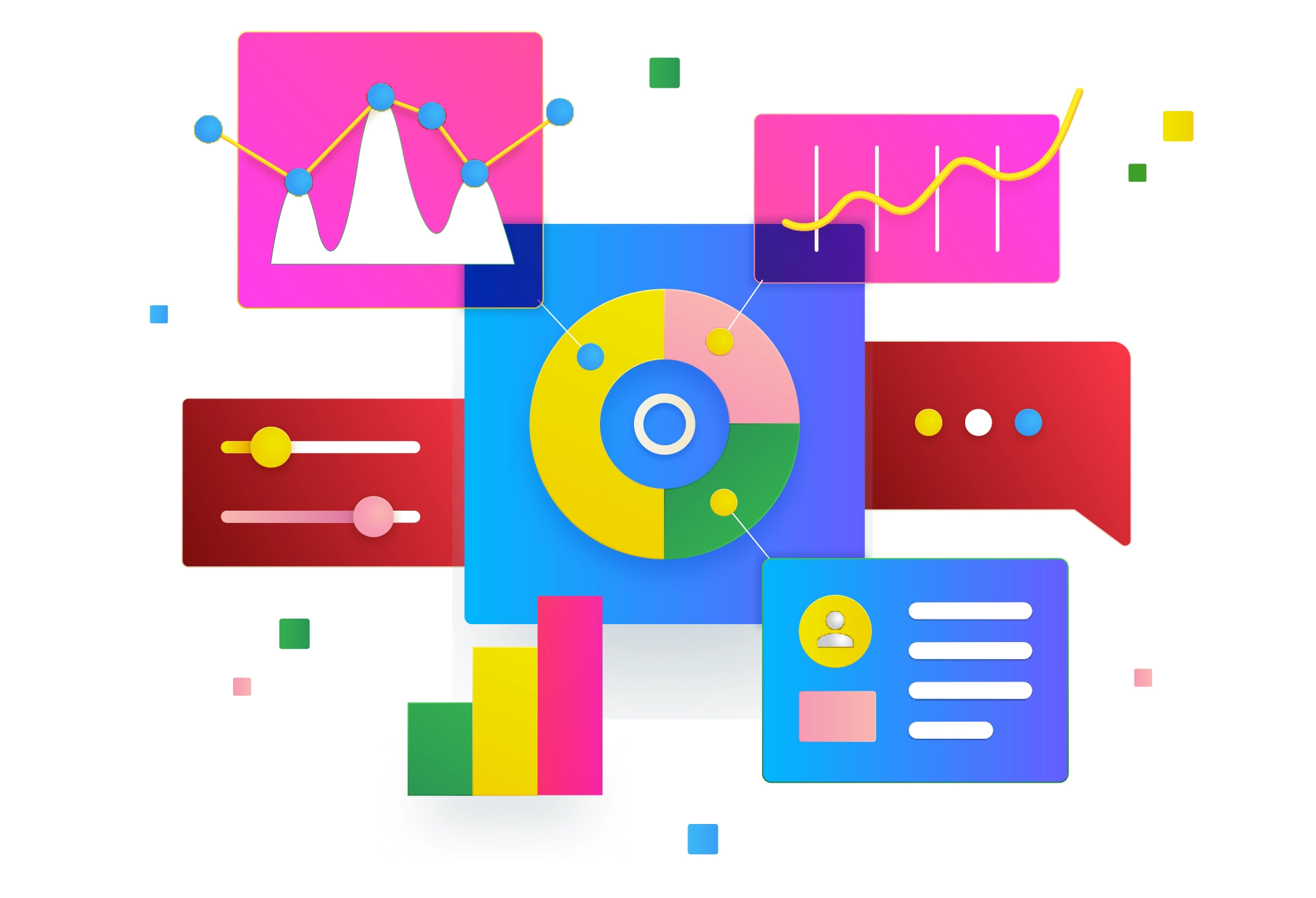Prowling the Significance of Quantitative UX Research Methods
Quantitative UX research techniques are essential for understanding user behavior and preferences and provide priceless information on how people engage with digital goods and services. Through the use of quantitative methods, researchers and designers may collect vast amounts of data impartially and effectively, giving rise to a thorough knowledge of user experiences. These techniques include a variety of techniques including surveys, data analysis from analytics programs, A/B testing, and large-scale usability testing.
It is essential to comprehend the value of user insights in design to produce products that satisfy consumers’ requirements and expectations. Throughout the design process, designers may make data-driven decisions thanks to quantitative UX research, which guarantees that design solutions are based on facts rather than conjecture. Furthermore, it facilitates the discovery of patterns, trends, and correlations in user data, directing iterative enhancements and optimizations to better the user experience as a whole.
which guarantees that design solutions are based on facts rather than conjecture. Furthermore, it facilitates the discovery of patterns, trends, and correlations in user data, directing iterative enhancements and optimizations to better the user experience as a whole.
We may go into the methodical process of collecting and evaluating data to get relevant insights by investigating quantitative UX research approaches. It includes developing research questions, planning experiments or surveys, gathering information, and using statistical analytic methods to draw insightful results. Organizations may make well-informed decisions that propel product innovation and company success by leveraging quantitative research to shed light on user behaviors, preferences, and pain areas.
The Role of Analysis in Quantitative UX Research and Deciphering Data Insights
The foundation for comprehending user behavior and preferences in digital interfaces is quantitative user experience research. Through the use of several quantitative research techniques, developers and designers may obtain important data insights to guide their design choices. This entails using important data and indicators to assess user interactions thoroughly, such as click-through rates, conversion rates, and time-on-task.
In UX quantitative research, data analysis is essential because it enables researchers to glean valuable insights from huge datasets. Researchers can find patterns, trends, and correlations in user behavior by using statistical analysis techniques like regression analysis and A/B testing. These observations offer insightful advice on how to maximize user experiences, improve usability, and accomplish organizational goals. A variety of methodologies are used in quantitative UX research, including as analytics software, user testing, and surveys.  Through surveys, researchers may get quantitative information on user preferences, satisfaction levels, and demographics. Analytics tools that provide useful quantitative information on user interaction and website performance are Heatmaps and Google Analytics. Larger-scale user testing yields quantifiable information on usability problems, task completion rates, and user satisfaction levels overall.
Through surveys, researchers may get quantitative information on user preferences, satisfaction levels, and demographics. Analytics tools that provide useful quantitative information on user interaction and website performance are Heatmaps and Google Analytics. Larger-scale user testing yields quantifiable information on usability problems, task completion rates, and user satisfaction levels overall.
Designers and developers are empowered to produce digital experiences that effectively engage consumers through the integration of quantitative research in UX methodologies and comprehensive data analysis. Through the utilisation of data-driven insights, teams can enhance their designs iteratively, optimise user interfaces, and ultimately provide outstanding user experiences that propel company success.
Quantitative UX Research Methods; Crafting Surveys, Analyzing Data, and Testing User Behavior
Quantitative UX research methods encompass a variety of methodologies aimed at gathering numerical data to understand user behavior, preferences, and interactions with digital products. This approach involves designing surveys and questionnaires tailored to specific research objectives, enabling researchers to collect structured data from a large sample of users. By utilizing analytics tools such as Google Analytics or Hotjar, researchers can passively collect data on user interactions, navigation patterns, and website usage metrics. These tools offer valuable insights into user demographics, session durations, click-through rates, and other quantitative metrics, which can inform design decisions and product improvements.

In addition to surveys and analytics, A/B testing is a commonly used method in quantitative UX research. This involves presenting users with different versions of a design or feature and measuring their performance against predefined success metrics. Through A/B testing, researchers can systematically evaluate variations in user interface elements, content layouts, or feature implementations to identify which version yields better user outcomes. Moreover, user behavior analysis involves examining patterns and trends in user interactions, such as click heatmaps, scroll depth, and conversion funnels, to gain deeper insights into how users engage with a product.
The execution of UX quantitative research involves a systematic approach to data collection, analysis, and testing to derive actionable insights for improving the user experience. By leveraging surveys, analytics tools, and testing methodologies, researchers can quantify user preferences, identify pain points, and validate design decisions, ultimately driving product success and enhancing user satisfaction.
Conducting Statistical Analysis in Quantitative UX Research
The process of interpreting findings through statistical analysis is crucial to quantitative user experience research. When sifting through large datasets, statistical analysis tools act as a researcher’s compass, pointing out patterns, trends, and connections. These techniques give quantitative data interpretation a methodical approach, ranging from straightforward descriptive statistics to intricate inferential analysis.
More than simply math is involved in the interpretation of quantitative data; results must be placed in the larger context of user experience. Scientists examine the data in great detail, looking at both what it shows and why it matters. Understanding user interactions, preferences, and behaviors is a necessary step in this process to produce insightful data that influences decision-making.
Furthermore, the ultimate goal of quantitative UX research is to derive actionable insights from study findings. It entails turning unprocessed data into useful suggestions that guide design choices and advancements in the product. Through the process of reducing complicated data into short and easily understood insights, researchers enable stakeholders to make well-informed decisions that improve user experiences.
The potential of quantitative UX research is unlocked by researchers who skillfully navigate statistical analytic tools, evaluate quantitative data, and extract actionable insights. This journey opens the door for innovative and iterative advancements in product development, while also providing light on consumer behaviors and preferences. The development of remarkable user experiences is ultimately fueled by the combination of data-driven decision-making and user-centric design philosophy.
Mobilizing Quantitative UX Insights for Enhanced User Experience Evolution
When it comes to designing and optimizing digital goods and services, quantitative user experience research is an invaluable resource for comprehending consumer behavior and preferences. Organizations may obtain important insights into how consumers interact with their products by methodically gathering and analyzing quantitative data, such as user metrics, survey results, and interaction patterns. These insights, which come from quantitative research techniques, offer useful data that influences decision-making and encourages iterative user experience enhancements.
Organizations may get direct customer feedback by using surveys and questionnaires. This helps them determine areas for development, identify pain spots, and gauge user happiness. Analytics technologies monitor user activity and interactions on digital platforms, which improves data collecting even more. Organizations may assess the effectiveness of various design variants using A/B testing approaches, which enables them to make well-informed judgments about which features or designs are more popular with customers.
After gathering data, businesses need to use statistical methods to evaluate it to find relevant patterns and trends. To guarantee accurate and useful insights, statistical significance and relevance must be carefully considered when interpreting quantitative data. Organizations may derive actionable insights that influence decision-making and result in measurable improvements in the user experience by having a thorough grasp of user behavior and preferences.
The design of user interfaces, the prioritization of feature upgrades, and choices about product development are all greatly influenced by these findings. Iteratively optimizing digital goods and services to better satisfy customer wants and expectations may be achieved by enterprises through the integration of quantitative UX insights into their operations. In the end, better user experiences provided by this data-driven strategy help firms increase engagement, boost user happiness, and accomplish business goals.
User Experiences with Pattem Digital; A Data-Driven Approach
Make the most of your digital products by utilizing Pattem Digital’s quantitative UX research expertise. To gather, analyze, and assess data in order to deliver meaningful insights into user preferences and behavior, our team use state-of-the-art methods. By applying modern technology and statistical analytic approaches, we can get actionable insights that guide decisions on product upgrades and design. We accurately and proficiently handle every aspect of quantitative UX research, from designing surveys and questionnaires to carrying out A/B testing and analyzing user behavior. We help businesses improve user experiences and achieve their strategic objectives by emphasizing iterative design and optimization. By collaborating with Pattem Digital, you can leverage quantitative UX research to help your digital items reach new sales milestones.
We recognize how critical it is to keep up with developments in UX research company and market trends. Our group is always investigating new techniques and resources to make sure our clients take advantage of the most recent developments in the industry. Pattem Digital is your go-to partner for driving the success of your digital goods and uncovering user insights because of its unwavering dedication to quality and enthusiasm for producing outstanding outcomes. Together, we will set out on a path of innovation and constant progress in UX research, enabling your company to prosper in the rapidly changing digital environment.





